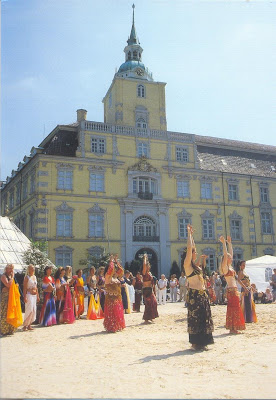You cannot visit Rotterdam, one of the largest harbours of the world, without seeing the harbours. The best way to see the harbours is making is a boattrip riding the Spido boats.
The year round Spido offers various harbour trips. I made the regular boattrip of one and half hour through the port of Rotterdam, but there also trips of three or even six hours to the Botlek, Europoort and Delta Works.
From the boat you can have a good look at the spectacular skyline of the 'Manhattan on the Maas' with its impressive architecture. You will have nice views at the Erasmusbridge and the Willemsbridge, the hotel New York, the Euromast an other sights as well. Heading west you will reach the harbour areas with the docks and wharfs.
Thank you Marco for this lovely card and the info with it.
Among the busy traffic of sea-going and inland ships, this trip is a special journey through one of the largest harbours in the world. You can see Rotterdam's impressive skyline with its imposing buildings glide by, and then get a unique view of the harbours shipyards, docks and the hypermodern transshipping of thousands of containers. Last but not least the tour will end with a view of the steamship 'Rotterdam', the former cruise flagship of shipping company Holland America Line. An exciting 75 minutes with clear descriptions of everything you see.
When you go for a trip on this boat, you can eat as many pancakes as you like:-))
The trip takes about an hour and whike you are eating you can admire the Rotterdam Skyline. On Saturday night it is possible to have a moonlight cruise and of course eat as much as you like.
The year round Spido offers various harbour trips. I made the regular boattrip of one and half hour through the port of Rotterdam, but there also trips of three or even six hours to the Botlek, Europoort and Delta Works.
From the boat you can have a good look at the spectacular skyline of the 'Manhattan on the Maas' with its impressive architecture. You will have nice views at the Erasmusbridge and the Willemsbridge, the hotel New York, the Euromast an other sights as well. Heading west you will reach the harbour areas with the docks and wharfs.
Thank you Marco for this lovely card and the info with it.

































